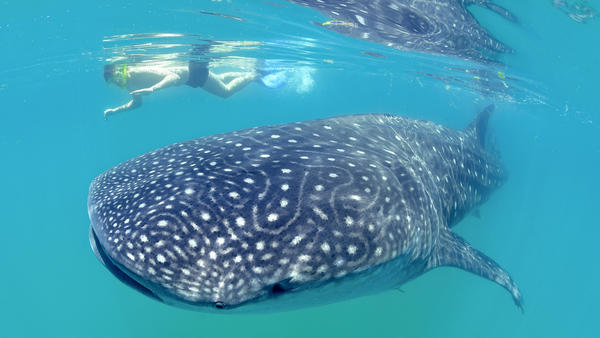Whale sharks arriving in Quintana Roo are in danger due to ships passing very close to them in the area of Isla Contoy, which may result in the decline of this endangered species on the brink of extinction.
Rafael de la Parra Venegas, a whale shark researcher, said that since the season for this animal began on May 15, ships have been seen daily circulating along the coast of Isla Contoy and passing within 100 meters of the sharks.
This is a risk for more than 400 whale sharks that can gather in this area, of which 48 have been marked to follow their route in real time.
But it should be noted that the ships sail parallel to the coast from the south, near the shore of Cancun, until they go around the edge of Isla Contoy, and continue towards Yucatan. Their closest route is to pass three miles from Isla Contoy, but they should pass at least 20 miles away.
The interviewee added that the lives of whale sharks are in danger if they collide with the vessels mentioned, which weigh more than 300 tons and are cargo ships, oil tankers, vessels carrying chemical substances, and passenger liners.
Among the damages to these sharks are propeller wounds, and if a specimen dies “sharks do not have a swim bladder, so if they are run over and killed, we have no evidence, because they sink.”
To address this situation, de la Parra Venegas said that a project is being promoted to deploy three marine traffic buoys, to keep ships at least 10 miles away from tourists and whale sharks. This project was proposed back in 2010.
“This project was proposed to the Navy, the Harbor Master’s Office, and the Infrastructure, Communications, and Transportation Secretariat, but it has not been approved due to bureaucracy”, Rafael de la Parra stated.
The whale shark season lasts until September 17. The project proposes that ships be kept on one side of the buoys, and the largest fish in the sea and people on the other. The project is valued at 55 thousand US dollars.
The project has been presented to Senate candidates in the current electoral contest and people from the federal government have been asked to support the project. Finally, the whale shark expert highlighted that more than 1,325 specimens have been photographed and identified in the area.


